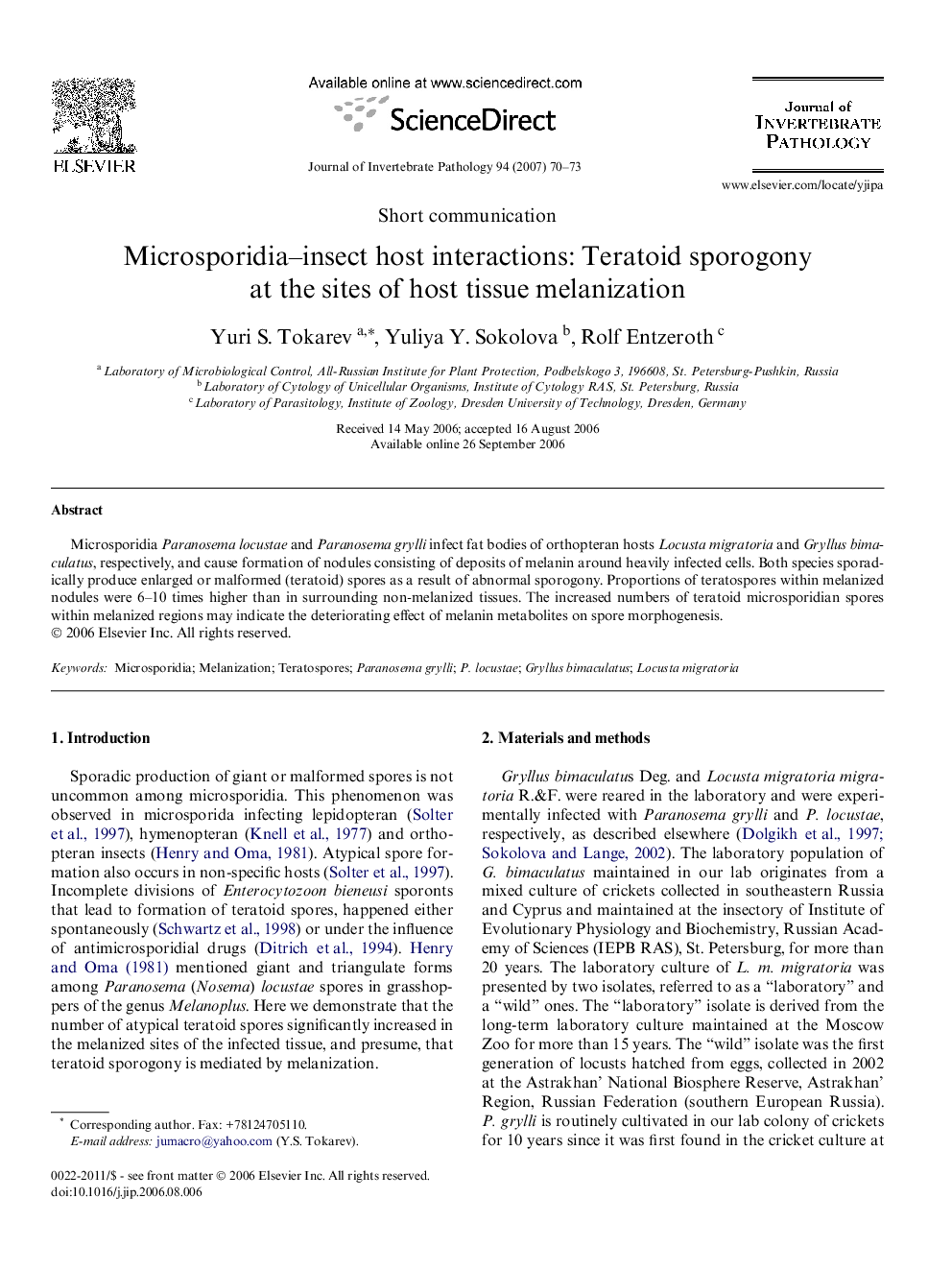| Article ID | Journal | Published Year | Pages | File Type |
|---|---|---|---|---|
| 4558736 | Journal of Invertebrate Pathology | 2007 | 4 Pages |
Abstract
Microsporidia Paranosema locustae and Paranosema grylli infect fat bodies of orthopteran hosts Locusta migratoria and Gryllus bimaculatus, respectively, and cause formation of nodules consisting of deposits of melanin around heavily infected cells. Both species sporadically produce enlarged or malformed (teratoid) spores as a result of abnormal sporogony. Proportions of teratospores within melanized nodules were 6–10 times higher than in surrounding non-melanized tissues. The increased numbers of teratoid microsporidian spores within melanized regions may indicate the deteriorating effect of melanin metabolites on spore morphogenesis.
Related Topics
Life Sciences
Agricultural and Biological Sciences
Ecology, Evolution, Behavior and Systematics
Authors
Yuri S. Tokarev, Yuliya Y. Sokolova, Rolf Entzeroth,
